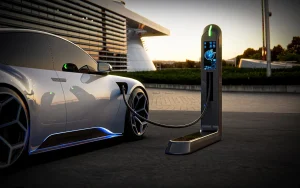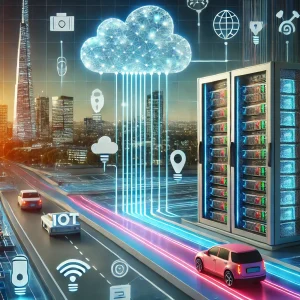The Rise of Electric Vehicles: What You Need to Know

The Rise of Electric Vehicles: What You Need to Know.
The electric vehicle (EV) revolution is here, transforming the automotive industry and redefining how we think about mobility. As global concerns over climate change intensify and fossil fuel prices fluctuate, EVs have emerged as a sustainable, cost-effective alternative to traditional gasoline-powered cars. But what exactly makes them so popular, and why is their adoption accelerating at a record pace?
This article dives into the rise of electric vehicles, covering key aspects like technological advancements, environmental impact, government policies, and what you need to consider if you’re planning to make the switch.
—
Why Electric Vehicles Are Gaining Popularity
1. Environmental Sustainability
Electric vehicles produce zero tailpipe emissions, drastically reducing greenhouse gas output compared to internal combustion engine (ICE) vehicles. EVs run on electricity, which can be sourced from renewable energy like solar, wind, or hydropower, further minimizing their carbon footprint.
2. Lower Operating Costs
One of the biggest draws of EVs is their affordability in the long run. Charging an EV is significantly cheaper than refueling a gas-powered car. Additionally, EVs have fewer moving parts, reducing maintenance costs.
3. Technological Advancements
Modern EVs boast cutting-edge technology, from long-range batteries to advanced infotainment systems. Innovations like regenerative braking, autonomous driving capabilities, and over-the-air software updates make EVs highly attractive.
READ ALSO: Exploring the Potential of AI-Powered Chatbots.
4. Supportive Government Policies
Governments worldwide are incentivizing EV adoption through tax credits, rebates, and grants. Policies such as bans on the sale of new ICE vehicles in certain regions are further accelerating the shift toward electric mobility.

—
Challenges Facing Electric Vehicles
Despite their growing popularity, EVs face some challenges:
1. Charging Infrastructure: Limited charging stations in some areas can be a hurdle for EV owners, especially during long trips.
2. Battery Production and Recycling: While EVs are eco-friendly, battery manufacturing and disposal can have environmental impacts.
3. Upfront Costs: EVs can be more expensive to purchase initially compared to traditional cars, though prices are steadily dropping.
—
Top Electric Vehicle Models of 2024
Several EV models have captured the market’s attention in 2024. Here are a few:
1. Tesla Model 3: Known for its range, performance, and autonomous features.
2. Ford Mustang Mach-E: A stylish and spacious SUV with great tech integration.
3. Rivian R1T: A rugged electric truck perfect for outdoor enthusiasts.
4. Hyundai Ioniq 5: Combining futuristic design with excellent range and efficiency.
—
The Impact of EVs on the Environment
EVs significantly reduce carbon dioxide emissions, especially when charged with renewable energy. They also contribute to cleaner air in urban areas, improving public health by cutting down on air pollution.
However, their batteries require materials like lithium, cobalt, and nickel, which must be mined responsibly to avoid environmental degradation and ethical concerns.
—
What to Consider Before Buying an EV
If you’re thinking about making the switch, here are some factors to evaluate:
1. Range: Consider your daily commute and whether the EV’s range meets your needs.
2. Charging Options: Ensure you have access to home or public charging stations.
3. Incentives: Research available government rebates or tax breaks for purchasing an EV.
4. Total Cost of Ownership: Factor in charging costs, insurance, and maintenance savings over time.
—
Future Trends in Electric Vehicles
The EV market is evolving rapidly. Here are some trends to watch:
1. Solid-State Batteries: Promising longer ranges and faster charging.
2. Vehicle-to-Grid (V2G) Technology: Allowing EVs to supply power back to the grid.
3. Autonomous EVs: Self-driving technology combined with electric mobility.
4. Expanding EV Models: From compact city cars to heavy-duty trucks, the variety of EVs continues to grow.
—
Conclusion
The rise of electric vehicles is reshaping the automotive landscape. With their environmental benefits, cost savings, and advanced technology, EVs are an appealing option for the future of transportation. As infrastructure improves and battery technology advances, the transition to electric mobility will only accelerate.
Switching to an EV not only supports a sustainable future but also offers practical advantages for drivers worldwide. Now is the perfect time to join the electric revolution.
—
Meta Description
Discover why electric vehicles are transforming transportation. Learn about their benefits, challenges, top models, and future trends in this comprehensive guide.
—
Alt Tags for Images
1. Alt Tag for Image 1: “Modern electric vehicle charging at a public station in a vibrant cityscape.”
2. Alt Tag for Image 2: “Futuristic electric vehicles alongside renewable energy infrastructure like solar panels and wind turbines.”
—
Target Keywords
Electric vehicles
EV market trends
Benefits of electric cars
EV charging infrastructure
Sustainable transportation
Best electric cars 2024
Future of electric vehicles
Electric car technology
Let me know if you’d like any edits or need additional elements added to the article!






